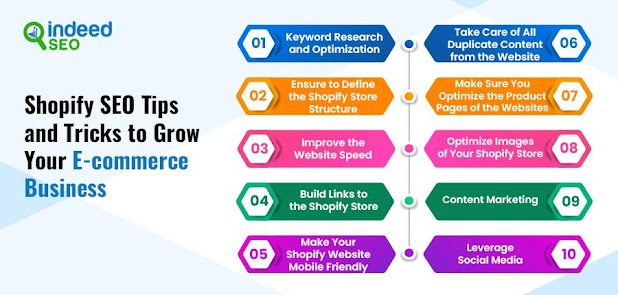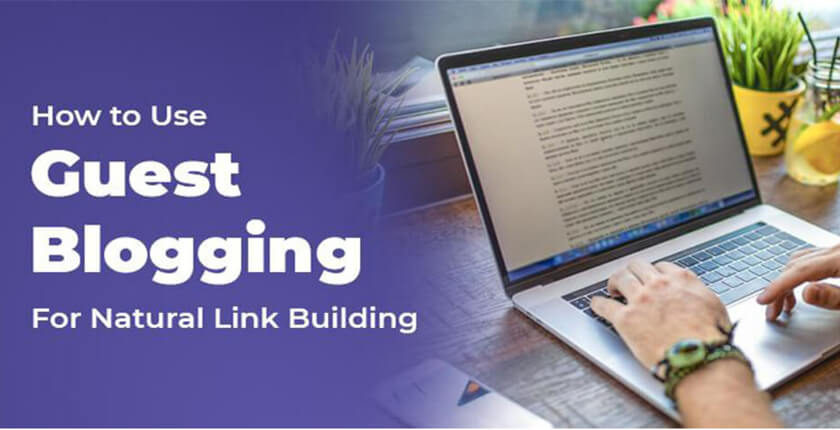If you are running an Ecommerce business no doubt you want to grow your business and achieve the business goal within no time. Here, coming under the radar of the Shopify content management system delivers significant benefits but it is only possible if you know all the strategies of search engine optimization.
That means, Shopify SEO is an important technique for E-commerce businesses to improve their online presence and generate high organic traffic to the website. One of the reports states that businesses that don’t optimize their website for Shopify SEO most of these stores fail to survive in this competitive world.
As we step into 2023, it’s essential to stay updated with the latest Shopify SEO techniques and strategies. In this article, we will discuss the worth of essential store optimization techniques for your Shopify store in 2023.
What is Shopify SEO?

Shopify SEO is optimizing an website online store which is built on the Shopify platform to boost its online presence and ranking in SERPs. SEO, or search engine optimization, includes numerous tactics and strategies aimed at increasing organic traffic to a website by improving its ranking on SERPs.
The more visible your online store in the search engines higher the organic traffic to the Shopify store which will also multiply the E-commerce sales.
Does every Ecommerce business need Shopify SEO?
According to the report, around 75% of the potential audience related to the specific business never goes beyond the first page. Keeping this in mind, it becomes necessary for the Ecommerce business website to optimize it for SEO by which the website will come on the first page of search engines using relevant keywords.
Some of the key benefits Shopify SEO can deliver to the Shopify Ecommerce business: –
- Helps in boosting the store’s online presence along with brand awareness and makes the store reputed.
- SEO helps the store to outrank the rivals in the search results which will attract potential buyers.
- Improves the user experience of the website by increasing the conversion rates.
- Shopify SEO will help Ecommerce stores to rank high on search engines which will send qualified leads to the site.
Also Read: Expert Tips For Redesigning Your Old Logo
Shopify SEO Tips and Tricks to Grow your E-commerce Business

Implement the below strategies in your Ecommerce business which will enhance its online presence and maximize the chances of success.
1. Keyword Research and Optimization
One of the foundations of effective SEO is thorough keyword research. Identify relevant keywords that potential customers may use to search for products or services in your niche. Several tools like Google Keyword Planner, SEMrush, or Ahrefs can assist you in getting valuable keywords with high search volumes and low competition.
Optimize your Shopify store by incorporating these keywords into key areas such as product titles, descriptions, headings, and meta tags. However, avoid keyword stuffing as it can negatively impact the website’s ranking. That means, aiming for natural and informative content that includes relevant keywords to improve online visibility without compromising user experience.
2. Ensure to define the Shopify Store Structure
One of the reports states that Google crawlers like easy-to-navigate websites as they offer excellent user experience which boosts engagement and decreases bounce rates. So, if your Shopify website has an excellent navigation structure then surely your potential customers will stay on the site for a long period of time. This results in an increase in sales and more profit.
Here you have to remember that any of the prospects will click the website more than three times. So, make sure to fix the website structure along with the menus. That means, it should match the titles of the website pages that customers want to reach.
For example, if your website page is all about customer support the title of the menu should be customer support. On top of that, also make the internal links descriptive which will help users to know which page they’re heading to just by looking at the anchor text.
3. Improve the Website Speed
Website speed is an vital factor that plays an essential role in user experience and search engine rankings. Slow-loading pages can lead to higher bounce rates and decreased organic traffic. One of the reports states that if the website is taking more than 3 seconds to upload then the potential audience will leave the site and move to another service provider. Optimize your Shopify store for speed by compressing images, leveraging browser caching, minifying code, and utilizing Content Delivery Networks (CDNs) to reduce server response times.
Regularly monitor your website’s performance using tools like Google PageSpeed Insights or GTmetrix. These tools provide recommendations to help you identify and resolve speed-related issues. A faster website not only enhances the user experience but also increases the likelihood of search engines ranking your pages higher.
4. Build links to the Shopify Store
Backlinks to the website act as a backbone for SEO. They are very helpful as they show SERPs that several other reputed sites trust and value your content. On top of that, they are also helpful in boosting the Ecommerce store’s online presence. So, if you want to build a strong backlink profile ensure to follow the below tips.
- There are several established industry leaders and influencers that allow the business to get a link. So, reach out to them and request them to give a link to the store.
- Secondly, search for broken links for varied products or services that are quite relevant to your business. Once you have one or many, talk to the website owner and request them to link to your E-commerce store. This is an opportunity and also a win-win situation as it will repair broken links and you will get a backlink in return.
- Find out the unlinked mentions with the help of tools available online to find the places where your store has been mentioned but not the links. Once you come to know about these websites, owners reach out at them and request them to add a link to your Shopify store.
- Talk to your business field leaders and influencers and interview them which is a great way to develop high-quality backlinks and make your website rank high on SERPs.
5. Make your Shopify website mobile friendly
With the popularity of mobile devices, optimizing your Shopify store website for mobile users is mandatory for the best results. Ensure that your website is mobile-friendly and offers a seamless browsing experience across different screen sizes. Apart from that, use responsive design principles to adapt your content and layouts to various devices.
Furthermore, consider applying Accelerated Mobile Pages (AMP) to improve page load times on mobile devices. Google prioritizes mobile-friendly websites in its search results, so a mobile-optimized Shopify store can give you a competitive advantage.
6. Take care of all duplicate content from the website
According to the experts of digital marketing when two websites offer the same content on two varied URLs it’s an issue of duplicate content. Moreover, Google or any other search engine is not able to find which of the websites have canonical versions. That means, having duplicate content on the Shopify website is detrimental to SEO success.
In short, duplicate content on the Shopify website affects the Shopify SEO greatly. So, don’t go for duplicate content on any of the pages to fix the problem of duplicate content.
7. Make sure you optimize the product pages of the websites
For best results, ensure that each product page of the Shopify store is fully optimized. That means, using unique, engaging, and descriptive product titles that include targeted keywords with low search rates.
On top of that, craft compelling and detailed product descriptions that highlight the features, benefits, and unique selling points. Also, include relevant images and optimize their file names and alt tags to improve accessibility and search engine visibility.
8. Optimize images of your Shopify Store
Almost every search engine looks more than text while ranking the web pages of the website. That means, they also look for images or videos as they offer visual appeal and offer higher engagement of the potential audience. There are mainly two aspects of images in search engines that help in establishing relevance with the content.
They are Alt text and File name. Adding Alt text to the website content or blog delivers several positive benefits. Like, if by chance images are not visible to the user the alt text offers descriptions of the images. Moreover, search engines also know or read the images with alt text which helps in understanding the content in a better way. On top of that, they are also helpful for visually impaired people.
However, if you talk about File names it is also a very essential part that Shopify store owners must consider. In simple words, make sure to give a descriptive name of the image by inserting primary keywords. For example, if your downloaded file name is IMG 2345 you must name it as the Baked Sandwich recipe that represents the product.
Additionally, make sure all the images should be compressed which will reduce the loading time of the web pages.
9. Content Marketing
Create a content marketing strategy to engage your potential audience and improve your search engine rankings. Develop a blog on your Shopify website store and regularly publish informative and valuable content related to your products, industry trends, or customer insights. Moreover, optimize every blog post with relevant keywords and internal links to other pages on your website for excellent results.
Additionally, consider expanding your content strategy to include other formats such as videos, podcasts, or infographics. Diversifying your content can attract a wider audience and increase the chances of gaining organic traffic through different channels.
10. Leverage Social Media
Social media platforms are not direct rankings factors but they affect Shopify SEO greatly. So, for best results remain active on any of the reliable social media platforms to engage with your potential audience. Moreover, share valuable content and drive organic traffic to the Shopify store.
Also Read: What are the Benefits of Guest Blogging for SEO?
FAQ’s
1)- Is Shopify worth it in 2023?
Generally, the answer to this question is yes but overall it depends upon the business vision and ambitions. Keep in mind, Shopify stores are a bit more expensive than normal non-commerce builders as it comes with rich advanced sales features.
2)- Why do most Shopify stores fail?
According to the report, around 95% of Shopify online stores fail. The reason for this failure is a lack of SEO strategies that help the business to rank high on search engines that will automatically attract potential clients.
3)- What is the future growth of Shopify?
With the popularity of online stores, Shopify is forecasted to grow high. That means, Shopify earnings and revenue will be approximately 54.7% and 20.4% annually. On top of that, EPS will grow by 55.5% and the return on equity will be around 8.5% in 3 years.
Conclusion
As we enter 2023, optimizing your Shopify online store for search engines should be a top priority. This is done by implementing the vital techniques outlined in this article, like conducting comprehensive keyword research, optimizing on-page elements, improving site speed, and enhancing user experience, you can position your store for higher visibility and improved organic traffic. Keep up with the latest SEO trends and continue to refine your strategy to stay ahead in the ever-evolving world of e-commerce.





